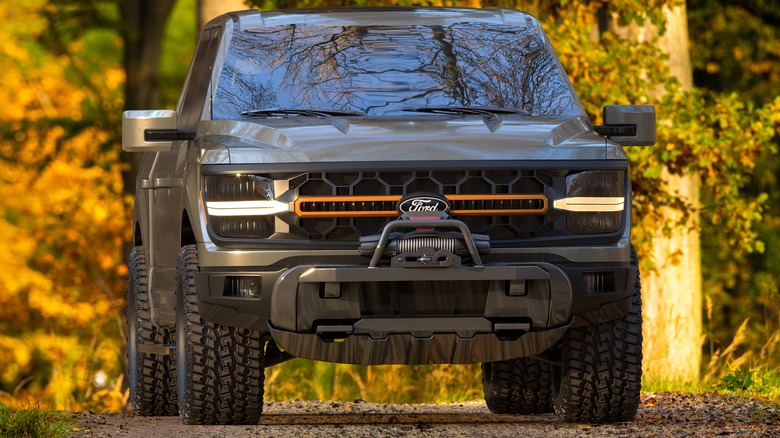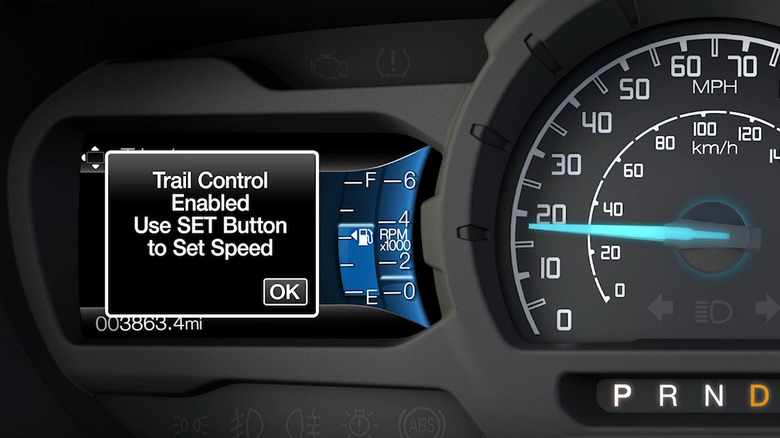How Ford's Trail Control Works, And Which Vehicles Come With It
Off-roading can be a bit of a challenge, even in the most capable of vehicles, which is why Ford has added a lot of features to its most capable vehicles. This includes one called Trail Control, available in the Tremor off-road package for Ford's pickups — the Ranger, F-150, and F-250 and F-350 Super Duty — and the Ford Bronco and Bronco Sport SUVs. Trail Control gives these pickups much better control in tough road conditions while you focus on the challenges that lie ahead.
Ford's Trail Control lets drivers choose a speed between 1 and 20 miles per hour, taking over the acceleration and braking to ensure the vehicle stays at this speed no matter how the path changes. Meanwhile, the driver can focus on steering and keeping the vehicle at the right angle by placing the tires properly on tricky terrains. This is similar to Toyota's Crawl Control feature on its off-road SUVs.
How to use Ford's Trail Control for off-roading
Using Trail Control is very easy. First, switch it on and off by pressing the Trail Control button on the vehicle's console — it should be the top left button near the G.O.A.T. Modes dial. It will also turn off automatically if you reach a speed over 42 mph. That's because Trail Control can only be up to 20 mph in 4-wheel-drive (or 5 mph tops while in reverse).
Once Trail Control is on, you can set the speed it will stay the whole time Trail Control is on). This can be done by first accelerating or decelerating until you are at a comfortable speed for the road ahead by choosing a speed on your steering wheel. Select "SET+" to increase the speed or "SET-" to decrease the speed. Once you start driving, the set speed can be adjusted by braking.
Before turning on Trail Control and choosing a speed, always take in your surroundings. Every off-road path has its own challenges that will determine your Trail Control speed and how you go about maneuvering your vehicle. This could mean icy paths, big boulders, or steep hills. Each road type requires a different approach.
Finally, make sure you have the overlanding essentials every vehicle should carry before you take it off the main path. And you might be using your 4-wheel-drive wrong — here's the right way.

